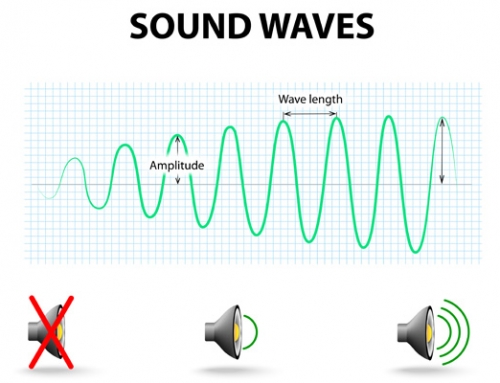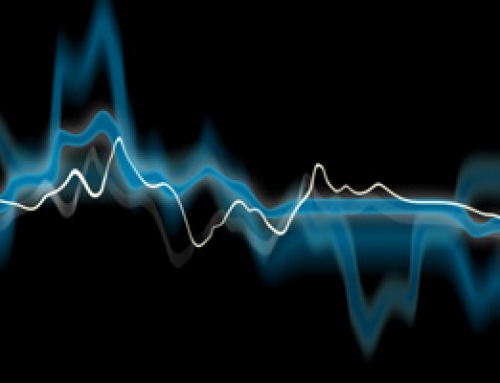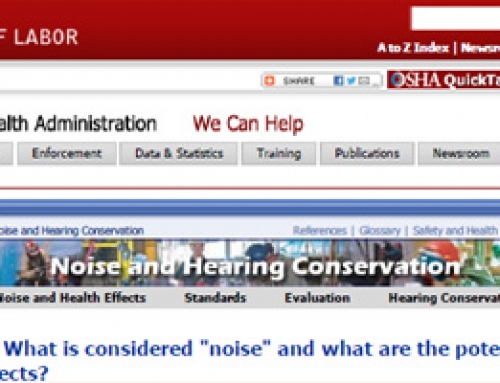Noise Ordinance Laws From the EPA’s Past
Identifies Noise Levels Affecting Health and Welfare
WIKI points out that “The Noise Pollution and Abatement Act of 1972 is a statute of the United States initiating a federal program of regulating noise pollution with the intent of protecting human health and minimizing annoyance of noise to the general public.
The Act established mechanisms of setting emission standards for virtually every source of noise, including motor vehicles, aircraft, certain types of heating, ventilation, and air-conditioning (HVAC) equipment and major appliances. It also put local governments on notice as to their responsibilities in land-use planning to address noise mitigation. This noise regulation framework comprised a broad data base detailing the extent of noise health effects.
Congress ended funding of the federal noise control program in 1981, which curtailed development of further national regulations. The Environmental Protection Agency (EPA) retains authority to conduct research and publish information on noise and its effects on the public.[2] The initial EPA regulations and programs provided a basis for development of many state and local government noise control laws across the United States.[3][4] See Noise regulation.”
WIKI goes on to say that “Noise regulation includes statutes or guidelines relating to sound transmission established by national, state or provincial and municipal levels of government. After the watershed passage of the United States Noise Control Act of 1972,[1] other local and state governments passed further regulations.
A noise regulation[2] restricts the amount of noise, the duration of noise and the source of noise. It usually places restrictions for certain times of the day.[3]
Although the UK and Japan enacted national laws in 1960 and 1967 respectively, these laws were not at all comprehensive or fully enforceable as to address generally rising ambient noise, enforceable numerical source limits on aircraft and motor vehicles or comprehensive directives to local government.
WIKI also points out that Historically,
“United States initial legislation
In the 1960s and earlier, few people recognized that citizens might be entitled to be protected from adverse sound level exposure. Most concerted actions consisted of citizens groups organized to oppose a specific highway or airport, and occasionally a nuisance lawsuit would arise. Things in the United States changed rapidly with passage of the National Environmental Policy Act (NEPA) in 1969 and the Noise Pollution and Abatement Act, more commonly called the Noise Control Act (NCA), in 1972. Passage of the NCA was remarkable considering the lack of historic organized citizen concern. However, the United States Environmental Protection Agency (EPA) had testified before Congress that 30 million Americans are exposed to non-occupational noise high enough to cause hearing loss and 44 million Americans live in homes impacted by aircraft or highway noise.[4] [5] [6] [7]
NEPA requires all federally funded major actions to be analyzed for all physical environmental impacts including noise pollution, and the NCA directed the EPA to promulgate regulations for a host of noise emissions. Many city ordinances prohibit sound above a threshold intensity from trespassing over property line at night, typically between 9 p.m. to 7 a.m., and during the day restricts it to a higher sound level; however, enforcement is uneven. Many municipalities do not follow up on complaints. Even where a municipality has an enforcement office, it may only be willing to issue warnings, since taking offenders to court is expensive. A notable exception to this rule is the City of Portland, Oregon, which has instituted an aggressive protection for its citizens with fines reaching as high at $5000 per infraction, with the ability to cite a responsible noise violator multiple times in a single day.[8]”
An Institution Fighting to Stop Noise Through Legislation
Is Noise Free America. They are “dedicated to fighting noise pollution, especially from boom cars, car alarms, leaf blowers, and motorcycles. Take a look at our legislative agenda to reduce noise in our communities.” Legislation is the primary route for legal action against noise. As noted above, the responsibility of laws and enforcement falls in the hands of state and local government. Below is one example of many of how legislation produced noise ordinance laws
OFFENSES AGAINST PEACE AND QUIET
Portions of Chapter 24 of Madison, Wisconsin’s Ordinances & Codes
are an example of government working to restrict, at times ban, excess noise levels.
Below are selections from Chapter 24 Offenses Against Peace and Quite that relate to noise. By clicking on this link of the Noise Ordinance Laws Madison WI, one can download the document. While this document is specific to the City of Madison, it represents many of the concerns individuals and the public have about noise.
24.04 PROHIBITION OF NOISES DISTURBING THE PUBLIC PEACE.
(1) It shall be unlawful for any person to make or assist in making any noise tending to unreasonably disturb the peace and quiet of persons in the vicinity thereof unless the making and continuing of the same cannot be prevented and is necessary for the protection or preservation of property or of the health, safety, life or limb of some person.
(2) It shall be unlawful for any person, firm, corporation, or other entity occupying or having charge of any building or premises, or any part thereof, to cause, suffer or allow any loud, excessive or unusual noise in the operation or use of any radio, stereo or other mechanical or electrical device, instrument or machine, which loud, excessive or unusual noise tends to unreasonably disturb the comfort, quiet or repose of persons therein or in the vicinity.
5. Permittees under this section shall comply with sound pressure levels as set forth in Sec. 24.08, MGO.
24.08 NOISE CONTROL REGULATION
(1) Statement of Purpose.
The City of Madison recognizes that excessive noise is a serious threat to the public health and welfare, public safety, quality of life and property values. Current science and technology permit abatement of noise sources which was not available in the past. Therefore, it is the policy of the City to prevent and abate excessive noise which may jeopardize the public health, safety or welfare or which would cause harm to property values or which would impair the quality of life within the city.
(2) Definitions.
All terminology used in this ordinance, not defined below or elsewhere within the Madison General Ordinances, shall be given the definitions provided by applicable publications of the American National Standards Institute (ANSI) or its successor body.
(a) A-Weighted Sound Level: the sound pressure level in decibels as measured on a sound level meter using the A-weighting network. The level so read is designated as db(A) or dBA.
(b) Ambient Noise: the all-encompassing noise associated with a given environment being usually a composite of sounds from near and far.
(c) Authorized Emergency Vehicle: the City hereby adopts and incorporates the definition of this term as set forth in Sec. 340.01(3), Wis. Stats. and any subsequent modification, revision, or amendment of that term as set forth in that section of the Wisconsin Statutes.
(d) Construction: any and all non-emergency related activity necessary or incidental to the erection, demolition, assembling, altering, installing, repairing or equipping of buildings, roadways, or utilities, including land clearing, grading, excavating and filling.
(e) Emergency Work: work necessary to restore property to a safe condition following a public calamity, work required to restore public utilities, or work required to protect persons or property from imminent exposure to danger.
(f) Impulse Noise: sound of short duration, usually less than one second, with an abrupt
onset and rapid decay. Examples of sources of impulse sound include explosions, drop forge impacts and the discharge of firearms.
(g) Muffler: properly-functioning sound dissipative device or system for abating sound of
escaping gases on equipment where such device is part of the normal configuration of powered equipment.
(h) Noise: any sound which annoys or disturbs humans or which causes or tends to cause an
adverse psychological or physiological or physiological effect on humans.
(i) Nuisance Noise: those noises which constitute a violation of Sec. 24.04 of the Madison General Ordinances.
(j) Receiving Zone: the zoning classification district in which the real property receiving the noise is located. The zoning classifications shall be those as set forth in Chapter 28 of the Madison General Ordinances.
(k) Sound Level Meter: an instrument which includes a microphone, amplifier, RMS detector, integrator or time averager, output meter, and weighing networks used to measure sound pressure levels. The instrument shall comply with the standards for Type 1 or Type 2 sound level meters as specified in the American National Standards Institute ANSI S1.4-1983 (Revised 2001) with Amendments S1.4A-1995 or its successor.
(l) Source Zone: the zoning district in which is located the real property from which noise originates. The zoning classification shall be that as set forth in Chapter 28 of the Madison General Ordinances.
(m) Stationary Noise: noise which the source thereof is either affixed to or operated upon a fixed point of land, building or other real property.
(n) Traffic Noise: the sound emanating from the operation of motorized vehicles upon public streets and highways. The sound which emanates from the operation of motorized vehicles upon private property shall be considered as stationary noise for the purposes of this section.
(3) Exemptions.
The provisions of this ordinance shall not apply to the following:
(a) The emission of sound for the purpose of alerting persons to the existence of an emergency, or the emission of sound in the performance of emergency work, or the emission of sound brought about by emergency conditions where such sound is a byproduct of activities necessary for the preservation of public safety or the protection of the health, safety and welfare of any person or property.
(b) Warning devices necessary for the protection of public safety, the emission of any noise necessary for the protection of the health, safety, or welfare of person or property or to any noise which is either necessary or required by law.
(c) The operation of authorized emergency vehicles.
(d) Outdoor gatherings, public dances, shows, and sporting and entertainment events for which a permit or license is required and obtained pursuant to Madison General Ordinances.
(e) Public works projects as authorized by the United States government, the State of Wisconsin and/or other political subdivisions.
(f) Limited Exemptions for Construction Noise.
1. Monday through Saturday. No person shall operate or permit the operation of any equipment used in construction work between the hours of 7:00 p.m. and 7:00 a.m., from Monday through Saturday, in such a manner as to unreasonably interfere with the peace, comfort and quality of life of neighboring persons of ordinary sensibilities, except as otherwise provided in this subsection (f).
2. Sunday. On Sunday, no person shall operate or permit the operation of any equipment used in construction work before10:00 a.m. and after 7 p.m. in such a manner as to unreasonably interfere with the peace, comfort and quality of life of neighboring persons of ordinary sensibilities, except as otherwise provided in this subsection (f). (Am. by ORD-13-00073, 5-14-13)
3. Permitted Hours of Operation of Construction Equipment. The provisions of Subsection (6) shall not apply to construction machinery when engaged in bonafide, temporary construction work between the hours of 7:00 a.m. and 7:00 p.m. from Monday through Saturday or between the hours of 10:00 a.m. and 7 p.m. on Sunday.
4. Operation of Construction Equipment Outside of Permitted Hours. The provisions of Subsection (6) shall not apply to construction machinery when engaged in bona fide, temporary construction work between the hours of 7:00 p.m. and 7:00 a.m. from Sunday evening through Saturday morning, or between the hours of 7 p.m. Saturday and 10:00 a.m. on Sunday, if the Common Council, following a hearing before the Board of Public Works, approves temporary construction work during this period. A notice of such public hearing shall be sent at least ten (10) days prior to the date of the hearing to all owners of record, as listed in the Office of the City Assessor, and to all post office addresses of property, in whole or in part, situated within three hundred (300) feet of the boundaries of the properties of the properties on which the construction is to take place.
5. Emergencies. The hour limitations in this subsection (f), shall not apply to emergencies where immediate action is required.
(g) Any fireworks display licensed under and operated in compliance with Sec. 34.105(14)(b), Madison General Ordinances, provided that such displays comply with any and all licensing and permit requirements of the Madison General Ordinances. (Am. by ORD-14-00012, 1-14-14)
(h) Any bells or chimes of any building clock, public or private school building, church, synagogue, or other place of religious worship.
(4) Education and Enforcement.
(a) Education. The Department of Public Health is responsible for implementing an educational program to raise citizen awareness of this ordinance, the steps involved in enforcing this ordinance and methods for abating or reducing noise. Education may consist of developing an educational brochure and/or posting such materials on the internet.
(b) Enforcement.
1. Responsibility for Enforcement. The Building Inspection Division of the Department of Planning and Community and Economic Development (hereinafter the “Building Inspection Division”) is the primary agency responsible for the enforcement of this ordinance Sec. 24.08 of the Madison General Ordinances unless otherwise noted herein.
2. Duties of the Director of the Building Inspection Division. The Director of the Building Inspection Division (hereinafter the “Director”) is responsible for:
a. Investigating all complaints regarding alleged violations of this ordinance.
b. Issuing orders under his/her authority pursuant to Sec. 27.09, Madison General Ordinances, requiring violators to comply with this ordinance and for issuing citations for violations of this ordinance. The Director may delegate these responsibilities to the inspectors appointed under the authority of sub. 24.08(4)(b)(2) c. below.
c. Ensuring that a sufficient number of his/her staff are trained and knowledgeable in the current techniques and principles of sound measurement equipment and instrumentation.
d. Maintaining permanent and current records of all matters arising out of the enforcement of this ordinance.
e. At least every 5 years, report to the Common Council on the impact of 24.08 and make recommendations which will improve this ordinance or its enforcement.
(5) Determining Sound Levels.
Sound levels shall be measured using the following procedures:
(a) All persons conducting sound measurements to assess compliance with this ordinance must be trained in the current techniques and principles of sound measurement equipment and instrumentation.
(b) Instruments used to measure sound levels must, as a minimum standard, conform to the specifications of the American National Standard Institute ANSI S1.4-1983 (Revised 2001) with Amendments S1.4A-1995 for Type 1 or Type 2 sound level meters. Sound level meters shall be capable of both fast and slow meter response.
(c) The following steps must be followed when preparing to take sound level measurements:
1. The instrument manufacturer’s specific instructions for preparation and use of the instrument shall be followed.
2. The sound level meter shall be calibrated periodically, in accordance with the manufacturer’s instructions.
3. When outdoor measurements are taken, a windscreen shall be placed over the microphone of the sound level meter in accordance with the manufacturer’s instructions.
4. The sound level meter shall be placed at an angle to the sound source, as specified by the manufacturer’s instructions, and placed at least four (4) feet above the ground. The meter shall be placed so as not to be interfered with during the taking of sound measurements.
5. Measurements shall be taken at any point within a receiving zone which point is outside of the property line of the source of the stationary noise.
6. Impulsive noise shall be measured with the sound level meter set for fast meter response, all other noise shall be measured with the sound level meter set for slow meter response.
7. Under this section, noises capable of being accurately measured are those noises which cause no more than (+ or -) two decibels fluctuation of the sound level meter or, in the case of impulsive noise, the mean average of four peak readings measured over the period of an hour.
(6) Maximum Permissible Sound Levels.
(a) General Limitations: Effective upon the enactment of this ordinance, in the following zoning districts (as set forth in Chapter 28, Madison General Ordinances) the sound emitted from any source of stationary noise shall not exceed the following limits at any point within a receiving zone which point is outside of the property line of the source of the stationary noise:
(b) Additional Restrictions on Impulse Noise. A reduction of 5 dBA will apply to each of the limitations set forth under sub. (6)(a) and above for all impulse noises.
(c) All new equipment and new vehicles powered by internal combustion engines sold in the City of Madison after January 1, 1972 shall comply with sound level standards for engine powered equipment and vehicles as specified in Sound Levels for Engine Powered Equipment, SAE Standard J952b, revised January 1969, of the Society of Automotive Engineers, and as listed in Table 1 below.
| Table 1. Maximum Sound Level. | |
| Type of Equipment | dBA at 50 feet |
| Construction and industrial machinery encompassing only mobile equipment, powered by internal combustion engines, such as crawler tractors, dozers, loaders, power shovels and cranes, motor graders, paving machines, off highway trucks, ditchers, trenchers, compactors, scrapers and wagons. | 88 dBA |
| Engine powered equipment of 5 hp. or less intended for use in residential areas at frequent intervals. Typical pieces of such equipment are lawn mowers, small garden tools, riding tractors and snow removal equipment. This specifically excludes commercial equipment not intended for frequent use in residential areas. | 70 dBA |
| Engine powered equipment exceeding 5 hp. but not greater than 20 hp. intended for use in residential areas at frequent intervals. Typical pieces of such equipment are lawn mowers, small garden tools, riding tractors and snow removal equipment. This specifically excludes commercial equipment not intended for use in residential areas. | 78 dBA |
| Engine powered commercial equipment of 20 hp. or less intended for infrequent use in residential areas. | 88 dBA |
| Farm and light industrial tractors. | 88 dBA |
(d) All new highway motor trucks, truck tractors and buses sold in the City of Madison after January 1, 1975 shall comply with sound level standards for such vehicles as specified in Exterior Sound Levels for Heavy Trucks and Buses, SAE Standard J366, approved July 1969, of the Society of Automotive Engineers.
(e) All new passenger cars and light trucks sold in the City of Madison after January 1, 1975 shall comply with sound level standards for such vehicles as specified in Sound Level for Passenger Cars and Light Trucks, SAE Standard J986a, revised July 1968, of the Society of Automotive Engineers.
(f) It is the policy of the City of Madison to purchase only equipment which complies with SAE Standard J952b.
(g) The Police Department shall have the responsibility of enforcing Sections 24.08(6)(c) through (f).
(7) Variance for Ambient Noise.
When the ambient noise at the site of a stationary or fixed noise producing device equals or exceeds the decibel limits provided in this section, the owner or operator of a stationary or fixed noise producing device may seek a variance from the noise limitations herein. Application for a variance from the noise limitation in a zoning district shall be made to the Board of Building Code, Fire Code, Conveyance Code and Licensing Appeals. The Board shall act upon and hear all applications for a variance under this subsection. The Board may grant the appeal where the Board finds that the ambient noise equals or exceeds the decibel limits for the receiving property and that the combination of the ambient noise and the noise from the stationary or fixed noise device does not exceed the limit for the receiving affected property by not more than 10 db. (Am. by ORD-09-00019, 3-14-09)
(8) Nonconforming Use.
Any nonconforming stationary or fixed noise producing device which existed lawfully at the time of the adoption of this ordinance and which remains nonconforming, and any stationary or fixed noise producing device which shall become nonconforming upon the adoption of this ordinance, or of any subsequent amendments thereto, may be continued to be used, as provided in this subsection.
(a) Any nonconforming stationary or fixed noise producing device shall not be modified, altered, added to, or enlarged in any manner unless such modifications, alterations, additions, or enlargements thereto are made to conform with all of the noise control regulations applicable to the device.
(b) Any nonconforming stationary or fixed noise producing device which is discontinued for a period of one year shall not be used unless the use is made to conform with all of the noise regulations applicable to the device.
(c) Any nonconforming stationary or fixed noise producing device shall not be repaired or restored to the extent that the cost of repair or restoration exceeds fifty percent (50%) of the full market value of the device. In the event that damage or destruction requires repairs or restoration which is less that fifty percent (50%) of such market value, repairs or restoration may be made if work is commenced within one year from the date of the partial destruction and is diligently prosecuted to completion.
(9) Effect of Zoning Change of Affected Property.
When the zoning classification of a receiving property is changed in a manner which would result in an existing noise source being in noncompliance with this ordinance, the noise source shall be considered a nonconforming use and shall be subject to the provisions of Subsec. (8) of this section.
(10) Penalties.
Any person violating any provision of subsection (6) of this ordinance shall be subject to a forfeiture of not less than twenty-five dollars ($25.00) nor more than one hundred dollars ($100.00) for each offense and for each day or portion thereof for a continuing or recurring offense. Any person who has been previously convicted of a violation of this ordinance in the twelve months preceding the instant offense shall be subject to a forfeiture of not less than one hundred dollars ($100.00) nor more than three hundred dollars ($300.00). Any person who has been previously convicted of two or more violations of this ordinance in the twelve months preceding the instant offense shall be subject to a forfeiture of not less than three hundred dollars ($300.00) nor more than five hundred dollars ($500.00).
(11) Severability.
If any provision, clause, sentence, paragraph, or phrase of this ordinance or the application thereof to any person or circumstances is held, for any reason by a court of competent jurisdiction, to be invalid or unconstitutional, such decision shall not affect the validity of other provisions or applications of the provisions of this ordinance which can be given effect without the invalid provision or application, and to this end, the provisions of this ordinance are declared to be severable.
24.09 LIGHT MOTOR VEHICLE NOISE CONTROL.
(1) Declaration of Findings and Policy.
Excessive noise from light motor vehicles is a serious hazard to the public health and welfare, safety, and the quality of life. A substantial body of science and technology exists by which excessive noise from light motor vehicles may be substantially abated. The people have a right to and should be ensured an environment free from excessive noise that may jeopardize their health or welfare or safety or degrade the quality of life. Therefore, it is the policy of the City of Madison to prevent excessive noise which may jeopardize the health and welfare or safety of its citizens or degrade the quality of life.
(2) Scope.
This ordinance shall apply to the control of all noise caused by light motor vehicles and originating within the limits of the City of Madison.
(3) Definitions.
(a) Terminology.All terminology used in this ordinance, not defined below, shall be in conformance with applicable publications of the American National Standards Institute (ANSI) or its successor body.
(b) A-Weighted Sound Level. This means the sound pressure level in decibels as measured on a sound level meter using the A-weighting network. The level so read is designated dB (A) or dBA.
(c) Noise Level. This shall refer to the A-weighted sound level produced by a light motor vehicle.
(d) Person. This means any individual, association, partnership, or corporation, and includes any officer, employee, department, agency or instrumentality of a State or any political subdivision of a State.
(e) Sound Level Meter. This means an instrument which includes a microphone, amplifier, RMS detector, integrator or time averager, output meter, and weighing networks used to measure sound pressure levels. The instrument shall comply with the standards for Type 1 or Type 2 sound level meters as specified in American National Standards Institute Standards ANSI S1.4-1971 or it successor.
(f) Sound Pressure Level. This means (20) times the logarithm to the base 10 of the ratio of the RMS sound pressure to the reference pressure of 20 micropascals. The sound pressure level is expressed in decibels.
(g) Noise. This means any sound which annoys or disturbs humans or which causes or tends to cause an adverse psychological or physiological effect on humans.
(h) Light Motor Vehicle. For the purposes of this ordinance a light motor vehicle shall mean any automobile, van, motorcycle, motor driven cycle, motor scooter or light truck with gross vehicular weight of less than eight thousand (8,000) pounds.
(i) Modified Exhaust System. It is an exhaust system in which:
1. The original noise abatement devices have been physically altered causing them to be less effective in reducing noise, or,
2. The original noise abatement devices have been either removed or replaced by noise abatement devices which are not as effective in reducing noise as the original devices, or
3. Devices have been added to the original noise abatement devices, such that noise levels are increased.
(4) 80 dBA Noise Limit.
It shall be unlawful for any person to cause noise levels from the operation of a light motor vehicle in excess of 80 dBA at any location within the corporate limits of the City of Madison. Measurement can be made at any distance greater than or equal to fifteen (15) feet from the closest approach to the vehicle.
(5) Excessive Noise.
Notwithstanding the noise limit expressed under Subsection (4), it shall be unlawful for any person to operate a light motor vehicle such as to cause excessive noise levels as a result of a defective or modified exhaust system, or as a result of unnecessary rapid acceleration, deceleration, revving or tire squeal. (Am. by Ord. 11,896, 7-14-97; Ord. 12,786, 4- 9-01)
(6) Sound Producing or Amplification Devices.
(a) Notwithstanding the noise limit expressed in Sec. 24.09(4) of these ordinances and except as provided in Wis. Stat. § 347.38(1), no person may operate or park, stop or leave standing a motor vehicle while using a radio or other electric sound amplification device emitting sound from the vehicle that is audible under normal conditions from a distance of seventy-five (75) or more feet, unless the electric sound amplification device is being used to request assistance or warn against an unsafe condition. This subsection does not apply to any of the following:
1. The operator of an authorized emergency vehicle, when responding to an emergency call or when in the pursuit of an actual or suspected violator of the law or when responding to but not upon returning from a fire alarm.
2. The operator of a vehicle of a public utility, as defined in Wis. Stat. § 11.40(1)(a).
3. The operator of a vehicle that is being used in a community event or celebration, procession or assemblage.
4. The activation of a theft alarm signal device.
5. The operator of a vehicle that is being used for advertising purposes.
6. The operator of a motorcycle being operated outside of a business or residence district.
(b) Any owner, operator, or agent having control over the subject equipment violating any provision of this section shall, for the first violation, be subject to a forfeiture of not less than forty dollars ($40) nor more than eighty dollars ($80); for the second or subsequent violation within a year, be subject to a forfeiture of not less than one hundred dollars ($100) nor more than two hundred dollars ($200).
(7) Signaling Devices.
It shall be unlawful for any person to operate any horn or other audible signaling device on any motor vehicle except in an emergency or when required by law.
(8) Severability.
If any provision of this ordinance is held to be unconstitutional or otherwise invalidated by any court of competent jurisdiction, the remaining provisions of the ordinance shall not be invalidated.
24.20 PENALTY FOR VIOLATIONS OF THIS CHAPTER.
Any person who shall violate any provision of this chapter for which no penalty is specifically provided shall be subject to a forfeiture of not less than twenty-five dollars ($25) nor more than five hundred dollars ($500) for each offense.





